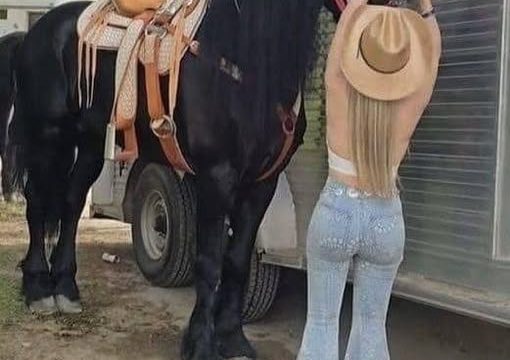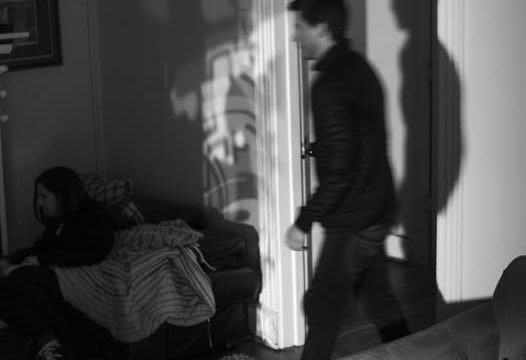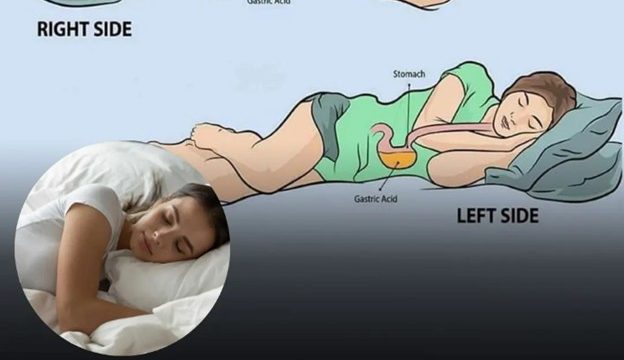Have you ever looked at the bark of a tree and thought you saw a face staring back at you? That’s not just your imagination playing tricks—it’s a phenomenon known as pareidolia. It’s the brain’s way of finding familiar shapes, especially human faces, in random patterns or natural scenes. One of the most fascinating examples of this is found in an illustration where two deer stand side by side, their elegant antlers arching into the air. At first glance, it’s simply a beautiful image of wildlife. But if you take a moment to really look, you’ll notice something else: a subtle human face hidden in the negative space between the deer’s necks. This clever illusion draws you into a deeper connection with the artwork, reminding us that nature and art often conceal surprises for those who take the time to look more closely.
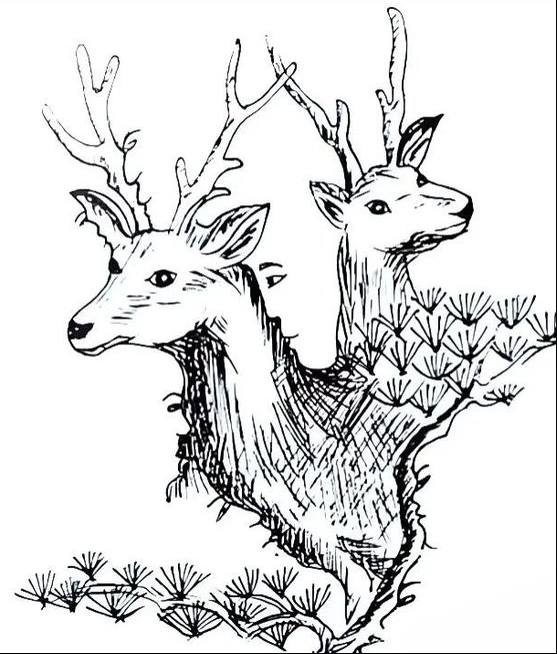
Crafting such illusions is no accident. Artists who specialize in this style use carefully planned techniques to embed hidden images within animal forms. It begins with aligning the natural contours of the animal—like the graceful curve of a deer’s neck—to outline the features of a hidden face. Negative space plays a critical role here. In the deer illusion, the gap between their bodies isn’t just empty background—it becomes the silhouette of a human profile. Artists also use selective details, turning the deer’s ears into eyebrows, their antlers into hair, and their eyes into key facial features. Shading is another trick; while the deer may be richly textured, the human face remains untouched, allowing it to stand out just enough to catch your eye at the right moment. These methods come together seamlessly to guide the viewer’s perception, flipping from “just two deer” to “wait, is that a person?” in the blink of an eye.
You don’t need a paintbrush to find pareidolia—nature is filled with its own hidden faces. Consider the “Old Man of the Mountain,” a now-collapsed rock formation in New Hampshire that clearly resembled a human profile when it stood. Look up at the clouds, and you might see your grandmother’s face or a cartoon character floating by. After a storm, knots in tree bark darkened by moisture can suddenly look like eyes and mouths, and some animals even have markings that mimic human features or expressions. These natural illusions make walks in the woods or moments spent cloud-watching feel like scavenger hunts, turning everyday experiences into something magical.
Why does this happen? Scientists suggest several psychological reasons. From an evolutionary perspective, early humans needed to quickly recognize faces to assess threats, identify allies, and bond socially. Our brains are hardwired for this function thanks to a region called the fusiform face area, which is specifically tuned to detect faces—even when they’re just vague suggestions. Additionally, the human mind craves order. In the chaos of natural patterns, we instinctively search for structure, and faces are among the most familiar forms we know. There’s also an emotional component: seeing a face—even an imagined one—evokes empathy and emotional connection, making a piece of art or a landscape feel more personal and alive.
Feeling inspired? You can try creating your own illusion art using a few simple techniques. Start by sketching two or more animals close together—deer, birds, or even fish. Look for the empty space between their bodies and think of how it might form a hidden face. Lightly sketch in the human features, using elements of the animals to enhance the illusion—antlers can become hair, necks can form jawlines. When outlining your drawing, use thicker lines for the animal forms and thinner lines for the hidden face to subtly direct attention. With some practice, you’ll be surprised at how effective a simple design can be in hiding a second image in plain sight.
Pareidolia can also be a great activity for families. Hosting a “Where’s the Face?” challenge is an easy, screen-free way to encourage observation and creativity. Gather a selection of images—artwork, cloud photos, or tree bark textures—and give each participant a short time limit to find a hidden face. Award points for quick spotting or for the most imaginative interpretations. For added fun, encourage everyone to draw their own optical illusion. Sharing and discussing what each person sees often leads to laughter and surprise, helping kids and adults alike appreciate the subtle beauty in ordinary things.
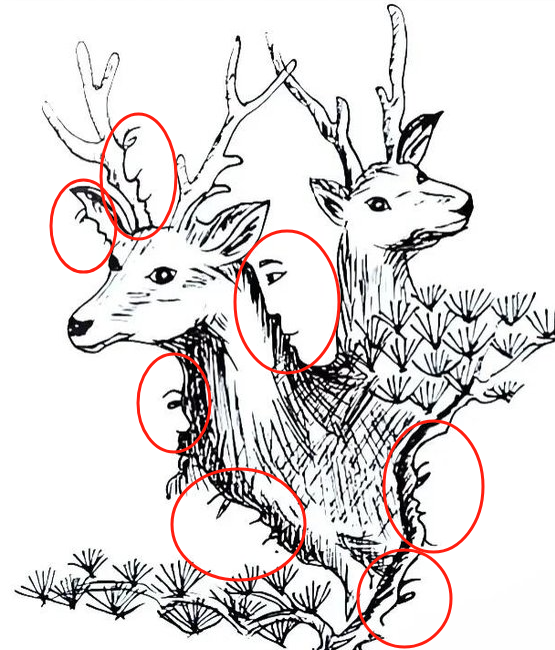
So why do these illusions appeal to such a wide audience? Hidden-face artwork captivates people of all ages because it sparks curiosity and wonder. That moment of discovery—when the brain finally catches on to the illusion—is deeply satisfying. It encourages mindfulness, requiring careful focus and patience, which is rare in our fast-paced world. Illusion art also bridges disciplines, combining psychology, biology, and design into a single experience. And most importantly, it nurtures creativity by training the mind to see beyond the obvious, embracing multiple perspectives and interpretations.
In the illustration of two deer concealing a human face, we glimpse the perfect harmony between the natural world and the human imagination. It’s a gentle reminder that hidden stories and meanings are all around us—if only we pause to notice. Whether you’re walking through a forest, staring at the sky, or flipping through an art book, you may find a face looking back at you. And in that moment of recognition, you’ll rediscover the simple joy of seeing something new in the familiar—a quiet celebration of the hidden magic woven into the world around us.

